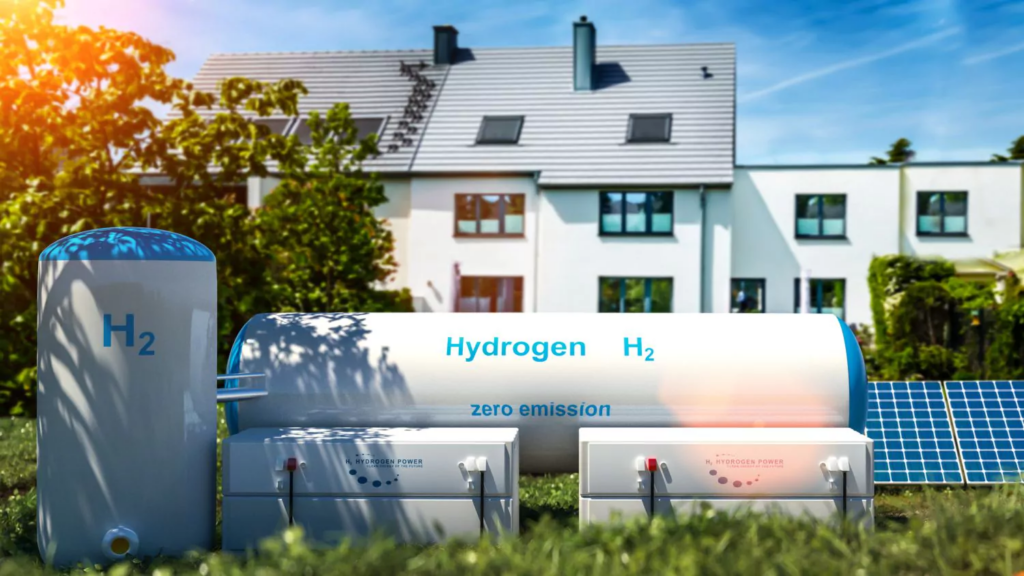Why science, not hype, must inform how we use hydrogen in Europe

The EU’s hydrogen ambitions are facing a reality check. Despite an ambitious strategy launched in 2020 and ongoing work to establish a comprehensive policy framework, recent forecasts suggest hydrogen deployment is lagging behind initial targets. However, this moment offers an opportunity for reflection and provides valuable lessons not just for Europe, but also for other regions.
While hydrogen production and deployment targets serve as useful goalposts, they shouldn’t overshadow the bigger picture. Ultimately, hydrogen is a tool, not the end goal. True success rides on decarbonising our industries and cleaning up our energy system to provide secure and affordable clean energy for Europe for the coming decades and beyond. We must evaluate hydrogen’s role through this lens, focusing on areas where hydrogen can genuinely add value and avoiding wasteful investments in ineffective solutions.
Why science, not hype, must inform how we use hydrogen in Europe Share on XHydrogen’s role in Europe’s decarbonisation strategy
To effectively focus on these areas of genuine value, it’s crucial to understand the nuances of hydrogen’s role in Europe’s decarbonisation strategy. While important, its role shouldn’t be overestimated. Some pundits tout hydrogen as a climate silver bullet, but the reality is more complex. Hydrogen is not inherently climate-neutral; its production, handling and usage present environmental challenges, including climate-warming effects from intentional and unintentional emissions. So, while promising, there are obstacles that need addressing to fully harness its potential.
The guiding principle for Europe’s hydrogen deployment should be to electrify first wherever possible, as even renewable hydrogen production is highly energy-intensive and therefore is often not the most efficient or effective solution for the challenge at hand. Hydrogen enters the equation because approximately 20-30% – of global CO2 emissions cannot be reduced through direct electrification alone. These are the hard-to-abate sectors such as heavy industrial processes (for example, cement, steel and fertilizer production) and long-haul transportation (cargo shipping and aviation).
Numerous studies are finding that a more narrow and targeted approach for hydrogen is needed, and governments, investors, policymakers and industry leaders should increasingly align their strategies with the scientific, economic and social realities.
Demand-side drivers and incentives are now also being directed toward hydrogen applications that make the most sense. A good example is the EU’s new regulation requiring 70% sustainable aviation fuel, which includes hydrogen amongst others, by 2050.
At the national level, the updated German hydrogen strategy mainly prioritises hydrogen deployment in industrial applications, Denmark is exploring hydrogen for industrial use and energy storage and Sweden is prioritising large-scale electrification and investments in renewable energy infrastructure, while strategically incorporating hydrogen for targeted applications such as industrial decarbonisation and heavy transport.
Avoiding costly mistakes in the hydrogen journey
Decarbonisation will be a complex challenge, but one that is necessary to tackle. We have the tools to get us there, but we have to be smart about which solutions we use and where we use them.
When it comes to hydrogen, we’re still seeing interest and debate around applications which make very little sense. Home heating is a prime example: Decarbonising this sector is crucial, and some say hydrogen can do the job, but scientific evidence consistently points to electrification and heat pumps or district heating over hydrogen due to its superior efficiency, safety and cost-effectiveness. Our calculations show that green hydrogen requires seven times more energy than direct electrification for two typically debated use cases: home heating and passenger cars. And when it comes to cost: a recent study published by Dr. Jan Rosenow at the Regulatory Assistance Project , found that hydrogen heating incurs energy system costs 24% higher and consumer costs 86% higher than alternatives, with hydrogen contributing only 1% in the optimal heating pathway.
Europe could look to England for a useful case study in avoiding hydrogen mistakes. Several proposed home heating trials were cancelled due to local opposition and production challenges, which highlighted the need for transparency and well-informed decisions for hydrogen deployment. The UK government’s decision to ban gas and hydrogen-ready boilers from new-build homes in England from 2025 further reinforced a logical shift towards electrification.
Europe has made commendable strides in adopting a range of solutions, including hydrogen, in its decarbonisation toolbox and pushing forward with world-leading policy design to get it right. What is now crucial is its continued shift towards more strategic deployment of hydrogen, while prioritising other solutions where they make the most sense — from an economic, social and climate perspective. By continuing to rely on evidence, science and innovation, Europe will be well-positioned to achieve its ambitious goals, securing a cleaner, safer and more resilient future for generations to come.










